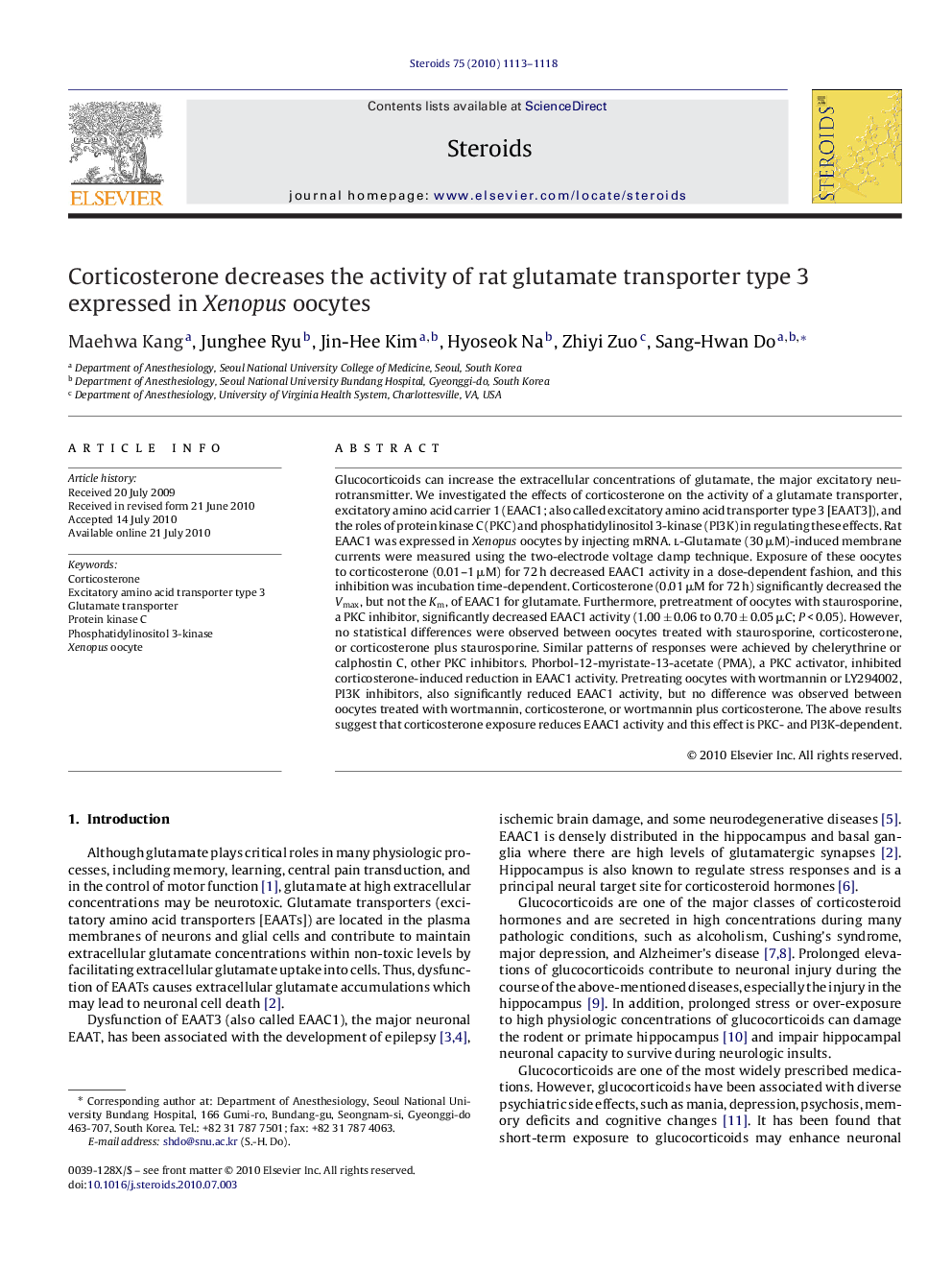| کد مقاله | کد نشریه | سال انتشار | مقاله انگلیسی | نسخه تمام متن |
|---|---|---|---|---|
| 2028356 | 1542734 | 2010 | 6 صفحه PDF | دانلود رایگان |

Glucocorticoids can increase the extracellular concentrations of glutamate, the major excitatory neurotransmitter. We investigated the effects of corticosterone on the activity of a glutamate transporter, excitatory amino acid carrier 1 (EAAC1; also called excitatory amino acid transporter type 3 [EAAT3]), and the roles of protein kinase C (PKC) and phosphatidylinositol 3-kinase (PI3K) in regulating these effects. Rat EAAC1 was expressed in Xenopus oocytes by injecting mRNA. l-Glutamate (30 μM)-induced membrane currents were measured using the two-electrode voltage clamp technique. Exposure of these oocytes to corticosterone (0.01–1 μM) for 72 h decreased EAAC1 activity in a dose-dependent fashion, and this inhibition was incubation time-dependent. Corticosterone (0.01 μM for 72 h) significantly decreased the Vmax, but not the Km, of EAAC1 for glutamate. Furthermore, pretreatment of oocytes with staurosporine, a PKC inhibitor, significantly decreased EAAC1 activity (1.00 ± 0.06 to 0.70 ± 0.05 μC; P < 0.05). However, no statistical differences were observed between oocytes treated with staurosporine, corticosterone, or corticosterone plus staurosporine. Similar patterns of responses were achieved by chelerythrine or calphostin C, other PKC inhibitors. Phorbol-12-myristate-13-acetate (PMA), a PKC activator, inhibited corticosterone-induced reduction in EAAC1 activity. Pretreating oocytes with wortmannin or LY294002, PI3K inhibitors, also significantly reduced EAAC1 activity, but no difference was observed between oocytes treated with wortmannin, corticosterone, or wortmannin plus corticosterone. The above results suggest that corticosterone exposure reduces EAAC1 activity and this effect is PKC- and PI3K-dependent.
Research highlights▶ EAAC1 regulates glutamate neurotransmission in the CNS. ▶ Exposure to corticosterone decreases EAAC1 activity concentration-dependently and these effects seems to be mediated by PKC and PI3K. ▶ The inhibition of EAAC1 activity by glucocorticoid may contribute to its neurotoxic effect.
Journal: Steroids - Volume 75, Issues 13–14, 12 December 2010, Pages 1113–1118